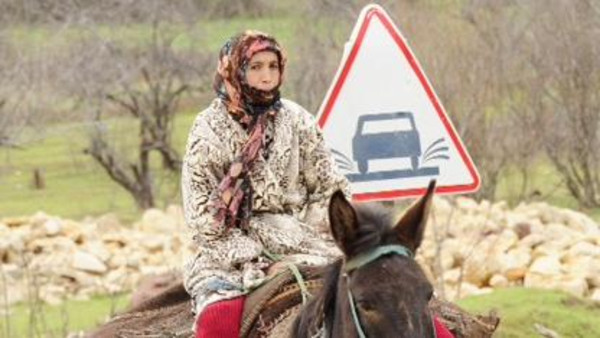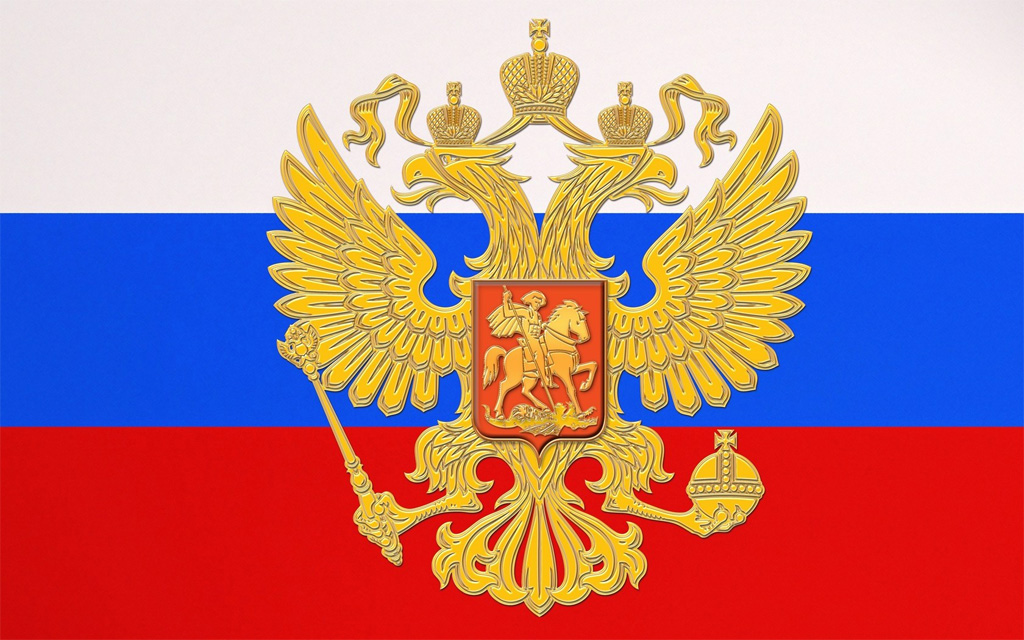The role of hydro-agricultural planning in the growth of emerging centers in highest Tassaout in Morocco

Prepared by the researche : EZZAOU ABDESSAMAD – PhD in geography, Ibn Tofail university Kenitra, Morocco
Democratic Arabic Center
Journal of African Studies and the Nile Basin : Twenty-sixth Issue – June 2024
A Periodical International Journal published by the “Democratic Arab Center” Germany – Berlin
Journal of African Studies and the Nile Basin
:To download the pdf version of the research papers, please visit the following link
Abstract
Hydro-agricultural planning is a determining factor in the dynamics of the emerging centers of the highest Tassaout, which they have benefited from the emigration experienced by the region. These centers have played a role in attracting quite considerable socio-economic projects; we find that they have not succeeded in fixing the population in space. Such a situation leads us to question the effectiveness of hydraulic development in creating sustainable development in this region.
Introduction:
Morocco’s rural area has known a series of transformations from independence to today. These transformations resulted from Morocco’s hydro-agricultural planning, as well as rural migration, which was accelerated by the successive years of drought.
The aforementioned factors have created several emerging highest Tassaout centers, with a concentration of various economic activities and various public facilities. This is the case for her people to play an important role in framing the surrounding rural areas, both at the technical, administrative and even social levels.
– Problematic
highest Tassaout is one of the areas that benefited from the State’s policy for the development of the agricultural sector, thereby extending the area’s agricultural area and the emergence of rising centers.
From this point of view, the general problem of the study can be formulated as follows: How has hydro-agricultural planning contributed to the growth of the emerging centers of the highest Tassaout?
– Study hypotheses
Hypotheses constitute hypothetical answers, an initial interpretation that attempts to answer within a verifiable conceptual and theoretical framework. It is also considered to be an answer to a problem that has not yet been completed.
From the foregoing one of the hypotheses that we will try to confirm or deny in this study is:
- The region’s hydro-agricultural planning contributed to the growth of a range of emerging centers.
- The emerging centers play a significant role in the administrative, technical and social framing of their rural backs.
- The emerging centers of the highest Tassaout suffer from inadequate modernization and modest equipment.
– Presentation of the field of study
Jean Drech is the first to set boundaries for the ease of possession that he identified between the Jbilat chain and the Grand Atlas Monastery, and divide it into Eastern(highest Tassaout), Western and Middle Hawz.[1]
The highest Tassaout is the first strong circle to be equipped with the ease of possession, with processing and reclamation operations launched from 1968 to 1977. Thus, the Moulay Youssef dam was built and about 260 million cubic meters of water was mobilized, enabling 52 thousand hectares (30 thousand hectares equipped and 22,000 hectares unequipped) to be watered.
Map No.1: highest Tassaout ‘s location for neighbouring units.
Source: Researcher’s achievement, 2024.
-Business Tools
In addition to the data obtained from the references and departments, we will rely in our study on fieldwork and the friction of the relevant inhabitants to seek their views on the subject. Without forgetting the cartographic work by relying on ArcGis software.
- Natural conditions governed the hydro-agricultural planning of the highest Tassaout.
1.1. The objectives of the hydro-agricultural planning of the highest Tassaout are numerous.
The passivity of natural conditions and the structure of traditional structures are the main drivers that precipitated the completion of hydro-agricultural planning projects. Within this framework, the objectives of the region’s preparation and processing can be summarized as follows:[2]
- The desire to overcome the negatives of climate conditions:
Climatic conditions in high are among the most important factors in agricultural production. By virtue of the region’s location within the semi-dry range, it is characterized by rainfall of up to 250 mm per year, so it was necessary to adopt watering as an imperative.
- Rationalization of the use of water resources:
The region is characterized by weak runoff, which is associated with dry and rainy periods, and peasants adopt traditional waterproof watering methods.
- Optimization of agricultural land:
The Sraghna plain is predominantly the sparkling lands, while the watered lands are confined to the Tassasout River and the earthy markets it branches from. Therefore, the project of the agricultural preparation of the area came to raise agricultural yields and achieve the food needs of the rapidly increasing static.
- Reducing migration:
The highest Tassaout Plain constituted a stalemate for the population. Hence the hydro-agricultural planning project for the area in order to mitigate the effects of drought and to try to stabilize the inhabitants of this agricultural field with distinction.
1.2. hydro-agricultural planning mechanisms have diversified into the highest Tassaout.
The daring policy of hydro-agricultural planning in the highest Tassaout has been carried out through a range of interventions:[3]
- The land annexation process that has been important to collect the one peasant signals within one signal while retaining the land real estate law, to overcome the hindrance of fragmentation.
- Real estate preparation process that can be summarized in three basic procedures: eradicate fork plants, remove stones and level the ground.
The area also identified the distribution of 59.86% of Sraghna’s land to agrarian reform cooperatives.
Statement No.1: Peasant Cooperatives benefiting from the Distribution of Land in Sihrij.
Source: Social Development Agency Kalaa of Sraghna, 2024.
This low-tank situation applies to the rest of the study area. It has known the prevalence of the cooperative system both in land collection and in the production of milk and agricultural products.
- Encourage afforestation, especially fruitful trees such as olives and almonds, to combat desertification in partnership between the region’s inhabitants and the High Delegate for Water and Forests.[4]
- Equipping eastern holdings with suspended cement and ground markets.
- Establishment of two dams to mobilize water resources in the highest Tassaout of the Tassaout Valley and Lakhdar Valley, with a view to providing the region with the water resources it needs.
Table No.1: Dams’ Absorptive Capacity for highest Tassaout.
|
Filling Ratio |
Volume of water bottled in million meters | Capacity in million mètres | Dams |
| 70,34% | 126.62 | 180 | Moulay Youssef |
| 85,58% | 109.95 | 130 | Sidi Idriss |
| 77,96% | 236.57 | 310 | Total |
Source: Hydrological Basin Agency Oum Rabia, Beni Mellal, 2024.
We note from the table that the highest Tassaout area has two dams with water resources, with a total water resources of 310 million meters, the first of which is the Moulay Youssef Dam of 180 million meters, followed by the Sidi Idriss Dam of 130 million meters, indicating that the water yield varies from year to year depending on the amount of the projections.
The following table summarizes the areas equipped with eastern holdings, which have benefited from the various operations mentioned above:
Table No.1: Areas equipped with highest Tassaout.
| Percentage | Total hectare | Settlement in hectares | Hectare reclamation | Hectare purification | Circles |
| 8.60 | 3157 | 893 | 1137 | 1127 | Attawiya |
| 1.58 | 580 | – | 290 | 290 | Teklawot |
| 4.97 | 1826 | 414 | 703 | 709 | Faryatiya |
| 28.67 | 10229 | 3113 | 4339 | 3077 | Sihrij |
| 8.52 | 3130 | 930 | 1100 | 1100 | Arradiya |
| 9.27 | 3405 | 865 | 1140 | 1400 | Dzouz |
| 25.18 | 9246 | 3216 | 3580 | 2450 | Bwida |
| 13.21 | 4853 | 853 | 2187 | 1813 | Awlad Said |
| 100 | 36726 | 10284 | 14476 | 11966 | Total |
Source: Regional Office for Agricultural Investment Al Hawz, 2024.
Through the table above, all of the highest Tassaout’s forceful circuits, along with watering, have benefited from the rest of the agricultural preparation mechanisms to varying degrees. This included purifications of 11,966 hectares, reclamation of 14,476 hectares and settlement of 10,284 hectares, a total of 36,726 hectares depending on each region’s specificities and needs.
- The hydro-agricultural planning of the highest Tassaout has secreted a range of emerging centers.
In Morocco, highest Tassaout has been known to emerge as Morocco’s inhabitants, both administratively, economically and socially. These centers have benefited from historical, economic and administrative factors that have made them aware of a different dynamic reflected in the availability of many diverse facilities, and some types of excellent third sector such as general medicine, dentistry, pharmacy and others.
Nevertheless, the emerging centers of the highest Tassaout have not been definitively free of their rural character, as their weekly markets are frequented by the inhabitants of neighbouring village groups with their bears and traditional means of transport. It continues to complain of its physical and socio-economic disturbance.
Map No.2: Emerging centers of the highest Tassaout.
Source: Researcher’s achievement, 2024.
2.1. Attawiya Model for Emerging Centers.
The development of Attawiya was linked to the shrine of Sidi Ahmed on the northern side of Secondary Road 508, which connects Marrakech with Damnat and Beni Mellal. Wali Sidi Ahmed knew of his mental illness, which made him a kiss for visitors who had been settling down for periods that might be long or short. This has led to the formation of a small, shrine-surrounded nucleus providing commercial consumer services.
As of the end of the 1980s, there were three milestones that appear to be evident in the field of Attawiya: the shrine or the corner of Sidi Ahmed, the weekly market and the Nwaji roundabout.[5]
Attawiya formed the center supervising the hydro-agricultural planning known by Equateur Haut to the highest Tassaout from the beginning of the 1970s, where it was selected as the Service’s headquarters in order to monitor the implementation of the project. This new and pivotal grant has led to a functional and economic transformation of the city through the reduction of the prevailing peasant activities in favour of the emergence of new activities linked to the transformations imposed by agrarian reform.
The highest Tassaout hydro-agricultural planning project was accompanied by the establishment of a regional circle. After belonging to the Marrakech region until the early 1970s, the Kalaa of Sraghna became a territory for coordination between its various components of communities, as well as for Attawiya itself and a group of village groups.[6]
The monitoring and follow-up of the project mandated the settlement of a range of peasant facilities and technicians’ residences and the development of financial interests reflected in the peasant loan, administrative and social consisting of elementary schools and preparatory Hassan II, as well as the secondary school of Rahhali al-Farouk, clinics, Royal Gendarmerie, the Mail and the Agricultural Investment Center.[7]
The emerging center’s demography was a boom in its population, moving from 7,334 in 1982 to 30,315 in 2014, ranking second only to the city of Kalaa of Sraghna.
2.2. Tamllalt
Its dynamism passed through stages, and each stage was characterized by a set of characteristics:
– During the old period: Before the was hydro-agricultural prepared, the name Tamllalt was now called Tamllalt Old, which gathered around the corner of one of Sidi Rahhal’s grandparents, a gathering regarded as the original nucleus of Tamllalt, which was then surrounded by barricades to protect it from attack or aggression, and to protect commercial convoys passing through the Royal Road between Marrakesh and Fez.
– The second phase of the expansion of the city was carried out during the implementation of the project to equip the Eastern Towns, where the Agricultural Investment Centre, headquarters and village community were modernized. This phase was also known as the completion of the first fragmentation of the location of the Nwayl roundabout and the conversion of the weekly market place to its current place, behind the church. Given the demographic dynamism, joy and flower fragments were created, and marginal and fragile dwellings were inflated in their dwellings, such as Sidi Bono roundabout, Tome roundabout and Shawi roundabout.[8]
Tamllalt is currently characterized by a transition from a village group to a real urban center, where it has exceeded the village community’s specificities, but it still lacks the organization and diversity of functions that make it an urban center.
With regard to the demographic situation, in 2014 the population was 16,539, with a population of 3.33 per cent between 1994 and 2004, while in 1982-1994 it was only 0.33 per cent.
Economically, agriculture is one of the most important pillars of Tamllalt’s economy, especially after the SODIA land of a private company that marries agricultural production, food manufacturing, export and marketing outside Morocco. A number of peasants have also been collected within the framework of peasant cooperatives.
2.3. Sidi Rahhal
The Center has developed through two phases:
– Stage of development: until 1960, the Centre was a large roundabout settled by rural residents who settled on the travelling corner and a group of Jews in the Mariners’ neighbourhood. At the time, the population ranged from 100 to 170 and moved from 528 in 1934 to 1704 in 1960. Sidi Rahhal knew of a demographic leap that coincided with his transformation into a point of observation during the colonial era. A peasant school, an allied industry plant and an olive age were also established in Zemran.[9]
– Period of development: after independence, migrant human groups, mainly from the countryside, mainly from the Great Atlas and Zemran, were present at the Centre, which was printed in its purely rural character to move its population in 1971 to 2,700. This demographic boom was accompanied by the expansion of my life, such as the Zawiyah al-Rahalia neighbourhood, the Administrative District, Bahja and Bayyada. During the 1992 dirt division, Twahra roundabout and Fokra were added to it. This was accompanied by various installations such as pashawi, village community and schools.[10] According to the 2014 General Population and Housing Census, the Centre’s population is 9,906.
With regard to the economic aspect, the Centre’s emerging economy is based on commercial activities at the urban level. Its rural area, particularly the North and West roundabouts, lives on peasant activities, especially olive and cereal cultivation.
- Rising centers contribute to the framing of their country backs.
3.1. Technical and financial framing.
The various oriental areas are available on local agricultural investment centers of the Al-Hawz Office. It is supervised by two technical annexes, one for coordination in the field of agricultural production and extension, and the other for distribution and management of water for the agricultural sector
The peasant loan also frames financially through two offices, one in tender and the other in Tamllalt, which provide limited loans to small farmers. It also notes the opening of various banking agencies in Attawiya, Tamllalt and many financial institutions that provide loans.
3.2. Social framing.
The emerging Centre of highest Tassaout has been known to expand social and educational services from primary and secondary schools, clinics and hospitals, as well as the presence of some private sector doctors. These services benefit the inhabitants of the various rural areas surrounding these centers, especially those away from the provincial capital of Kalaa of Sraghna.
The emerging centers also know the concentration of various administrative services that vary according to the center’s importance and the competencies missed by the central administration.
- The emerging centers of the highest Tassaout suffer from inadequate modernization and modest equipment.
4.1. Emerging centers know major imbalances.
The various centers have been known as highest Tassaout, which are characterized by significant physical, economic and social structural transformations, but are sometimes indiscriminate and uneven. Thus, most of these centers are experiencing significant urbanization, but they appear to be random in the form of sporadic and distant nuclei. There are also poor dwellings along the roads and some main streets.
In the face of growing demand for housing owing to growing demography, international migration and the emergence of signs of real estate speculation, limited housing fragments have been created, concentrated mainly in Attawiya and Tamllalt. Ground spots are sold at prices that exceed the population’s purchasing power, ranging from AED 700 to AED 2,000 per square meter.[11]
4.2. Emerging centers suffer from weak economic structures and equipment.
4.2.1. At the level of economic structures.
Emerging centers are experiencing significant industrial weaknesses, with the sector limited to certain food-processing units, which are milk and olive processing units and occupy only a limited number of labor.
The centers are also witnessing the holding of weekly markets of different importance and radiation from one center to another. Although they are economically important, they pose a problem that is reflected in their presence in the center of the center, which creates the problem of obstruction and chaos during their days.
The third sector is weak and unstructured, providing only simple services to the center’s residents and travelers. Some services are rare, such as specialized medicine, law, insurance and recreation, so residents turn to Marrakech and Kalaa of Sraghna, creating daily buses and taxis.
4.2.2. At the level of social equipment and facilities.
The emerging centers suffer from weak collective equipment, such as sewage, electricity, drinking water and the absence of paving alleys, as well as weak social and cultural facilities.
There is a significant discrepancy in the distribution of social services and facilities between the centers in the highest Tassaout, most of which are concentrated in Attawiya, followed by Tamllalt and Sidi Rahhal.
Conclusion:
From the foregoing, we conclude that hydro-agricultural planning has been instrumental in the dynamics of the emerging centers of the highest Tassaout. These centers play a range of framing roles in their watered sphere. It has also clearly benefited from the region’s international migration in recent decades following years of drought, which raises more than a question about the effectiveness of hydro-agricultural planning in creating sustainable development for these centers and their rural visibility.
Therefore, through this study a set of conclusions can be drawn:
– Hydro-agricultural planning contributed to the growth of the rising centers of the highest Tassaout.
– The State’s role was crucial in the administrative promotion of emerging centers, equipped with administrative, technical and social structures associated with hydro-agricultural planning.
– Emerging centers play a diverse framework role in the surrounding rural areas.
– The emerging centers continue to suffer from fragility and urban imbalance and are closely linked to their rural origin and dependence on the regional urban centers such as Marrakech and Sraghna.
Sources and references:
- Agricultural Investment Center 410, Sihrij.
- Chaouki Hassan, History of the Sraghna Tribe: Origins, Space and Population, National Press and Paper, Marrakech, 1999.
- Elhabbach Noureddine, the Dynamism of Small Cities and Territorial Development: Attawiya Model, Research for the Master, Faculty of Literatures and Humanities Kadi Ayyad, Marrakech, 2012.
- Elmbarki Hassan, Rural Modernization: Its Spread, Technical and Economic Manifestations and Socio-Field of the Middle Tassaout in the Eastern Hawz, State Thesis in Geography, Faculty of Literatures and Humanities Sidi Mohammed bin Abdellah, Fez, 2003.
- Ezzaou abdessamad, the use of geographic information systems in studying the effect of state intervention on expansion of the agricultural field in highest Tassaout (Morocco), the democratic Arab center, Germany, 2021.
- Hydrological Basin Agency Oum Rabia, Beni Mellal.
- Natouss Abderrahman, Dynamism of the Urban Landscape in the irrigated Field of highest Tassaout: Ataouiya City Model, Research for Master’s Degree in Geography, Faculty of Literatures and Humanities Sultan Moulay Slimane, Beni Mellal, 2014.
- Pascon, Paul, Haouz of Marrakech (tome. 1), 1983.
- Regional Office for Agricultural Investment Al Hawz.
- Social Development Agency Kalaa of Sraghna.
[1] Pascon, Paul, Haouz of Marrakech (tome. 1), 1983, P 24.
[2] Ezzaou abdessamad, The use of geographic information systems in studying the effect of state intervention on expansion of the agricultural field in highest Tassaout (Morocco), the democratic Arab center, Germany, 2021, P 290.
[3] Natouss Abderrahman, Dynamism of the Urban Landscape in the irrigated Field of highest Tassaout: Ataouiya City Model, Research for Master’s Degree in Geography, Faculty of Literatures and Humanities Sultan Moulay Slimane, Beni Mellal, 2014, P 87.
[4] Agricultural Investment Center No.410, Sihrij.
[5] Chaouki Hassan, History of the Sraghna Tribe: Origins, Space and Population, National Press and Paper, Marrakech, 1999, P 182.
[6] Elmbarki Hassan, Rural Modernization: Its Spread, Technical and Economic Manifestations and Socio-Field of the Middle Tassaout in the Eastern Hawz, State Thesis in Geography, Faculty of Literatures and Humanities Sidi Mohammed bin Abdellah, Fez, 2003, P 655.
[7] Elhabbach Noureddine, the Dynamism of Small Cities and Territorial Development: Attawiya Model, Research for the Master, Faculty of Literatures and Humanities Kadi Ayyad, Marrakech, 2012, P 33.
[8] Elmbarki Hassan, previous reference, P 632.
[9] Ibid, P 631.
[10] Ibid.
[11] Field visit, 2023.




